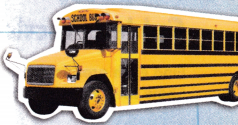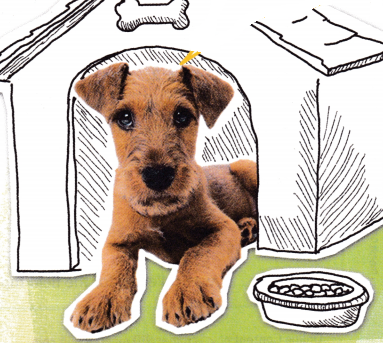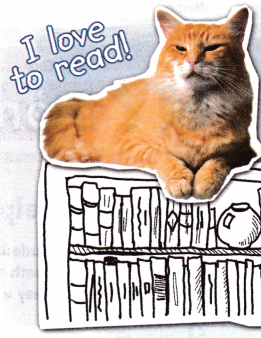All the solutions provided in McGraw Hill Math Grade 5 Answer Key PDF Chapter 2 Lesson 7 The Distributive Property will give you a clear idea of the concepts.
McGraw-Hill My Math Grade 5 Answer Key Chapter 2 Lesson 7 The Distributive Property
Example 1
For a field trip, 42 students each paid $3 for transportation Use mental math and the Distributive Property to find how much money was collected altogether.

Find 3 × 42.


So, $_____ was collected for the field trip.
Answer:
126
Explanation:

Example 2
Find 7 × 26 mentally using the Distributive Property. Show the steps that you used.

So, 7 × 26 = ___
Answer:
182
Explanation:

Guided Practice
Find each product mentally using the Distributive Property. Show the steps that you used.
Question 1.
5 × 18
5 × 18 = 5 × (___ + 8)
= (5 × ___) + (5 × ___)
= ____ + ____
= _____
So, 5 × 18 = ____
Answer:
90
Explanation:
5 × 18
5 × 18 = 5 × (10 + 8)
= (5 × 10) + (5 × 8)
= 50 + 40
= 90
So, 5 × 18 = 90

Question 2.
2 × 21
2 × 21 = 2 × (___ + ___)
= (2 × ___) + (2 × ___)
= ____ + ____
= _____
So, 2 × 21 = ____
Answer:
42
Explanation:
2 × 21
2 × 21 = 2 × (20 + 1)
= (2 × 20) + (2 × 1)
= 40 + 2
= 42
So, 2 × 21 = 42
Independent Practice
Find each product mentally using the Distributive Property. Show the steps that you used.
Question 3.
6 × 13 = ___
Answer:
78
Explanation:
Given multiplicand is 6 and the multiplier is 13.
By multiplying both multiplicand 6 and multiplier 13, we get the value 78
The multiplication of the given number 6 × 13 = 78
Question 4.
3 × 52 = ____
Answer:
156
Explanation:
Given multiplicand is 3 and the multiplier is 52.
By multiplying both multiplicand 3 and multiplier 52, we get the value 156.
The multiplication of the given number 3 × 52 = 156
Question 5.
5 × 26 = ___
Answer:
130
Explanation:
Given multiplicand is 5 and the multiplier is 26.
By multiplying both multiplicand 5 and multiplier 26, we get the value 130.
The multiplication of the given number 5 × 26 = 130
Question 6.
4 × 69 = ___
Answer:
276
Explanation:
Given multiplicand is 4 and the multiplier is 69.
By multiplying both multiplicand 4 and multiplier 69, we get the value 276.
The multiplication of the given number 4 × 69 = 276
Question 7.
2 × 49 = ___
Answer:
98
Explanation:
Given multiplicand is 2 and the multiplier is 49.
By multiplying both multiplicand 2 and multiplier 49, we get the value 98.
The multiplication of the given number 2 × 49 = 98
Question 8.
7 × 23 = ___
Answer:
161
Explanation:
Given multiplicand is 7 and the multiplier is 23.
By multiplying both multiplicand 7 and multiplier 23, we get the value as 161.
The multiplication of the given number 7 × 23 = 161
Question 9.
26 × 6 = ___
Answer:
156
Explanation:
Given multiplicand is 26 and the multiplier is 6.
By multiplying both multiplicand 26 and multiplier 6, we get the value as 156.
The multiplication of the given number 26 × 6 = 156.
Question 10.
55 × 4 = ___
Answer:
220
Explanation:
Given multiplicand is 55 and the multiplier is 4.
By multiplying both multiplicand 55 and multiplier 4, we get the value as 220.
The multiplication of the given number 55 × 4 = 220.
Problem Solving
Question 11.
A horse is 17 hands tall. If a hand equals 4 inches, how tall is the horse in inches? Use the Distributive Property to solve.
Answer:
68 inches.
Explanation:
A horse is 17 hands tall. If a hand equals 4 inches
17 × 4 = 68 inches.
Question 12.
Mr. Collins is buying 5 train tickets for $36 each. What is the total cost of the tickets? Use the Distributive Property to solve.
Answer:
$180
Explanation:
From the given question find 36 × 5 = 180
The total cost of the ticket is $180
Question 13.
Melanie runs 23 miles each week. How many miles does she run in 9 weeks? Use the Distributive Property to solve.
Answer:
207 miles
Explanation:
23 × 9
The distributive property is as follows
(20 + 3) × 9
20 × 9 + 3 × 9
180 + 27
207 miles
Hot Problems
Question 14.
Mathematical PRACTICE Find the Error Dylan is using the Distributive Property to simplify 6 × (9 + 4). Find his mistake and correct it.
6 × (9 + 4) = 54 + 4
= 58
Answer:
6 × (9 + 4) = 6 × 13
= 78
Explanation:
Dylan didn’t follow the arithmetic rule. He doesn’t do the parentheses first.
6 × (9 + 4) = 6 × 13
= 78
Question 15.
? Building on the Essential Question How can the Distributive Property be used to multiply numbers? Explain.
Answer: You can use the distributive property to multiply numbers by changing the order of the numbers you’re multiplying and still achieve the same correct answer.
McGraw Hill My Math Grade 5 Chapter 2 Lesson 7 My Homework Answer Key
Practice
Find each product mentally using the Distributive Property. Show the steps that you used.
Question 1.
4 × 48 = ___
Answer:
192
Explanation:
Given multiplicand is 4 and the multiplier is 48.
By multiplying both multiplicand 4 and multiplier 48, we get the value as 192.
The multiplication of the given number 4 × 48 is 192.
Question 2.
3 × 67 = ____
Answer:
201
Explanation:
Given multiplicand is 3 and the multiplier is 67.
By multiplying both multiplicand 3 and multiplier 67, we get the value as 201.
The multiplication of the given number 3 × 67 is 201.
Question 3.
6 × 18 = ____
Answer:
108
Explanation:
Given multiplicand is 6 and the multiplier is 108.
By multiplying both multiplicand 6 and multiplier 108, we get the value as 108.
The multiplication of the given number 6 × 18 = 108.
Question 4.
8 × 74 = ___
Answer:
592
Explanation:
Given multiplicand is 8 and the multiplier is 74.
By multiplying both multiplicand 8 and multiplier 74, we get the value as 592.
The multiplication of the given number 8 × 74 = 592.
Problem Solving
Question 5.
A bookshelf in Deirdre’s living room has 4 shelves. There are 12 books on each shelf. How many books are on the bookshelf altogether?

Answer:
48
Explanation:
From the given question find 4 × 12
48
Hence there are 48 books are on the bookshelf altogether.
Question 6.
Jorge is collecting baseball cards. He has 29 stacks of cards with 4 in each stack. How many cards does he have altogether?
Answer:
116
Explanation:
From the given question find = 29 × 4
= 116
Question 7.
Mathematical PRACTICE 3 Justify Conclusions The Distributive Property also combines subtraction and multiplication. For example, 3 × (5 – 2) = (3 × 5) – (3 × 2). Explain how you could use the Distributive Property and mental math to find 5 × 198.
Answer:
The value of 5 × 198 is 990.
Explanation:
The distributive property is a(b + c) = ab + ac
The given expression is 5 × 198.
5 × (100 + 90 + 8)
5 × 100 + 5 × 90 + 5 × 8
500 + 450 + 40
990.
Vocabulary Check
Fill in each blank with the correct term or number to complete the sentence.
Question 8.
The Distributive Property combines ____ and ____ to make multiplying whole numbers simpler.
Answer:
Addition and multiplication
Explanation:
The Distributive Property combines addition and multiplication to make multiplying whole numbers simpler.
Test Practice
Question 9.
Susana collected 5 cents at the recycling plant for each of her 78 cans. How much money did she collect altogether?
A. $0.39
B. $3.50
C. $3.90
D. $39.00
Answer:
$3.90
Explanation:
Susana collected 5 cents at the recycling plant for each of her 78 cans
5 × 78 = 390
1 dollar = 100 cents
390 ÷ 100 = $3.90